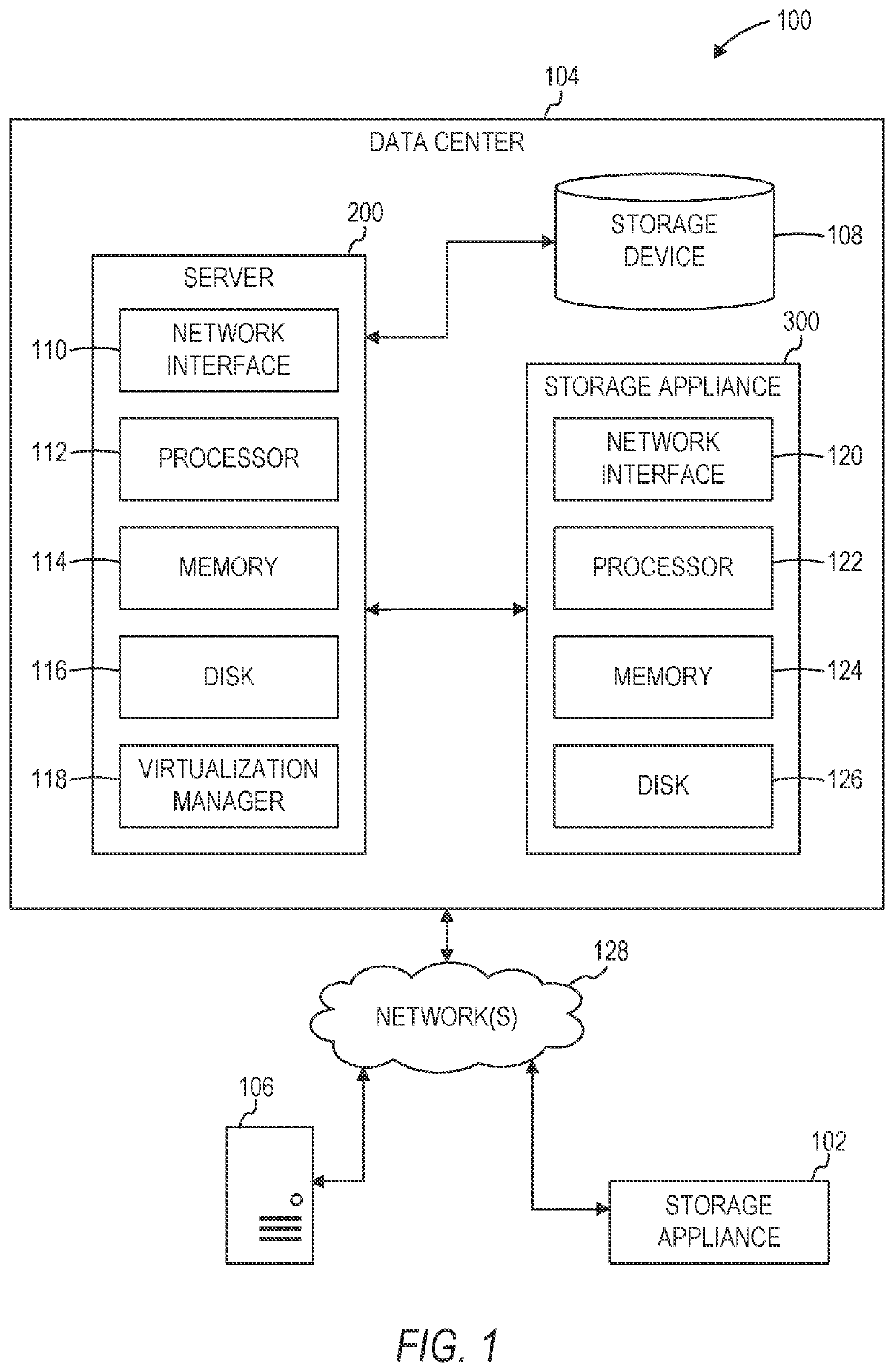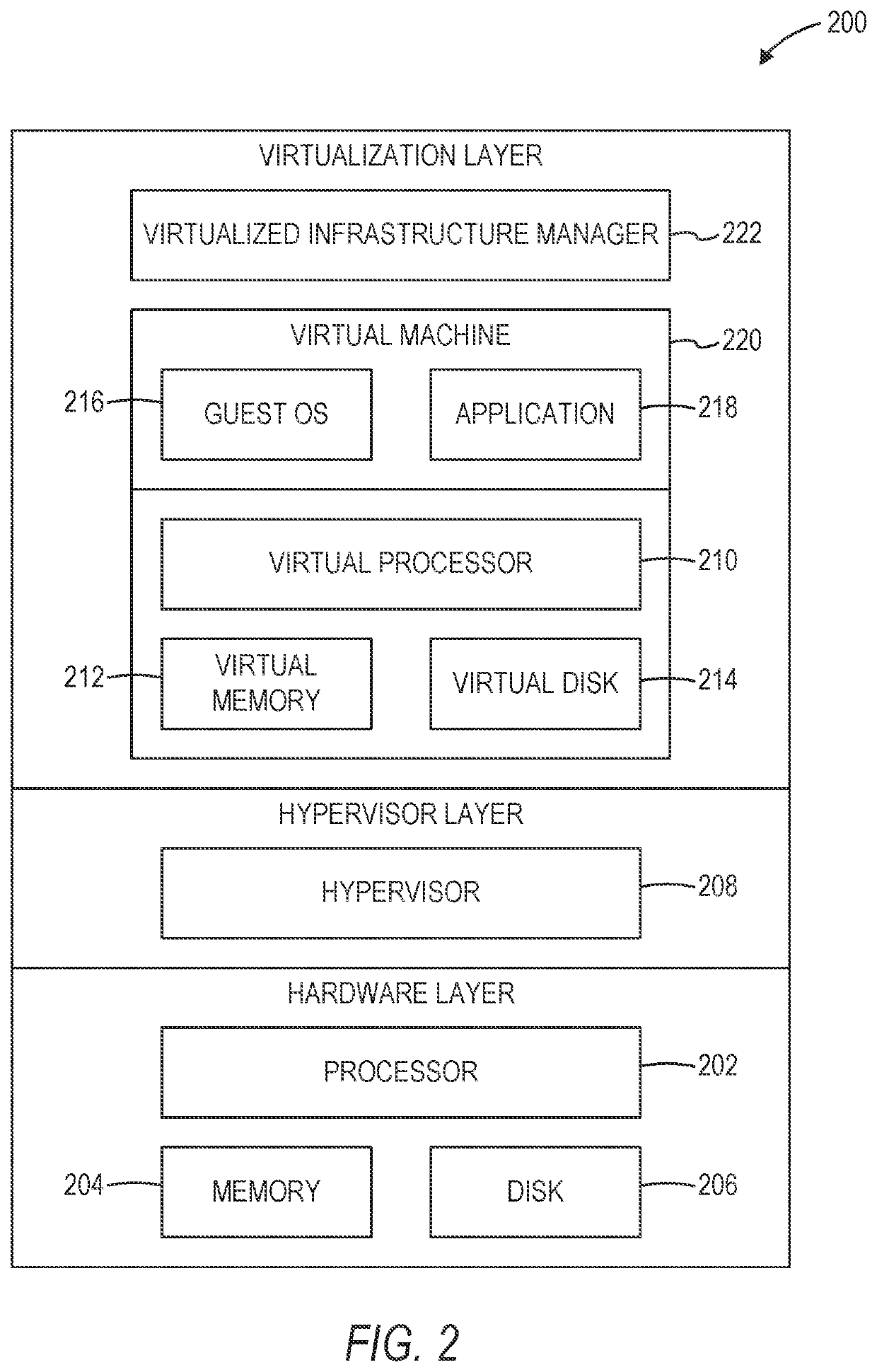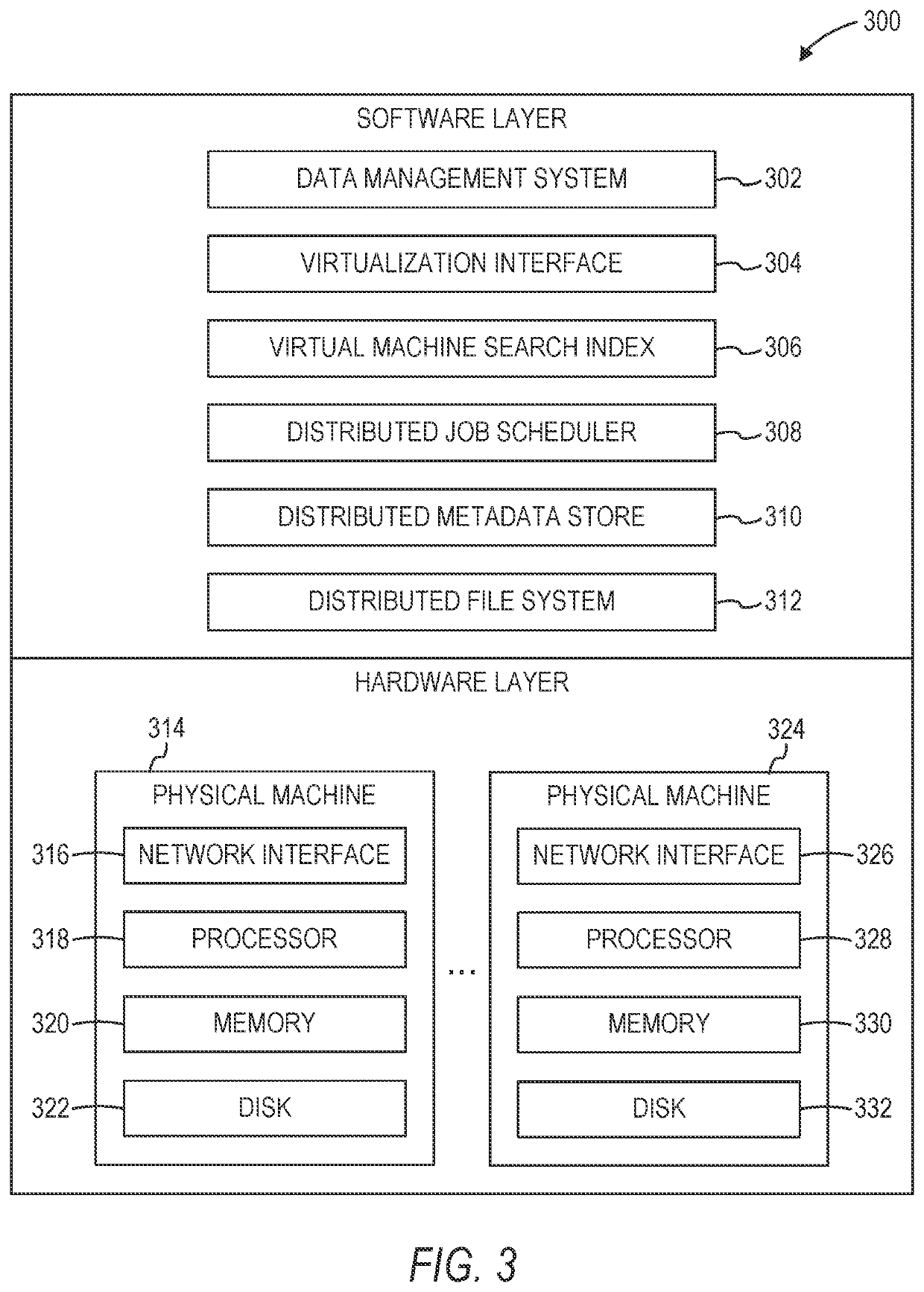Unmasking ransomware attacks
- Summary
- Abstract
- Description
- Claims
- Application Information
AI Technical Summary
Benefits of technology
Problems solved by technology
Method used
Image
Examples
example 2
[0085 includes the computer-implemented method of example 1, wherein the generating the first prediction comprises: obtaining a metadata file from a storage as a service data store, the metadata file comprising the snapshot metadata in Sorted Strings Table (SSTable) format; and feeding the metadata file into the snapshot-level machine learning prediction model, the snapshot-level machine learning prediction model generating the first prediction based on the metadata file.
example 3
[0086 includes the computer-implemented method of example 1 or example 2, wherein the generating the corresponding classification for each one of the plurality of files in the file system based on the plurality of file change data using the file-level machine learning prediction model comprises: computing a corresponding set of feature signals for each one of the plurality of file change events based on the plurality of file change data; and for each one of the plurality of file change events, feeding the corresponding set of feature signals into the file-level machine learning prediction model, the file-level machine learning prediction model generating the corresponding classification for each one of the plurality of files based on the corresponding set of feature signals.
example 4
[0087 includes the computer-implemented method of any one of examples 1 to 3, wherein the set of feature signals comprises one or more matches between corresponding file paths of the file change events and one or more file path patterns that are determined to be associated with ransomware.
PUM
 Login to view more
Login to view more Abstract
Description
Claims
Application Information
 Login to view more
Login to view more - R&D Engineer
- R&D Manager
- IP Professional
- Industry Leading Data Capabilities
- Powerful AI technology
- Patent DNA Extraction
Browse by: Latest US Patents, China's latest patents, Technical Efficacy Thesaurus, Application Domain, Technology Topic.
© 2024 PatSnap. All rights reserved.Legal|Privacy policy|Modern Slavery Act Transparency Statement|Sitemap



